In the movie “Field of Dreams,” Kevin Costner is told that if he builds it, they will come. In Hollywood terms, that statement envisioned a baseball diamond in a corn field whereby the ghosts of former ballplayers could materialize and make amends.
In the real world, though, envisioning a project and trying to predict the possible use, application and overall success, can be quite difficult.
But that’s what project managers do. They work with a team, usually on behalf of a client with a grand idea, to transform schematics on paper into a towering office building or an improved transit system that hopefully will bring sustained, beneficial public use – along with notoriety and architectural prestige.
Here’s a look at five of the biggest projects in the world, their progress and the desired results:
Sky City 1000
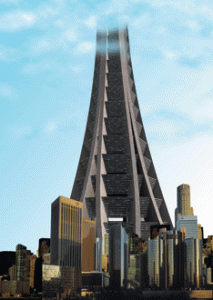 Poised to become one of the tallest buildings not just in Tokyo, Japan but the world, Sky City 1000 is an ambitious combination of residential housing and commercial office space – as well as a tourist destination.
Poised to become one of the tallest buildings not just in Tokyo, Japan but the world, Sky City 1000 is an ambitious combination of residential housing and commercial office space – as well as a tourist destination.
The 1,000-meter-tall structure, which has yet to be built by Takenaka Construction Co. Ltd., is envisioned as an architectural marvel with 14 aerial bases, called Space Plateaus, stacked on top of each other. Each Space Plateau will be designed to house commercial offices, public amenities like movie theaters, and community needs such as shops and classrooms. The current plan calls for 35,000 people to live full time in the building with another 100,000 people working there.
The concept, first announced in 1989, also includes plans for triple-decker, high-speed elevators and individual trains servicing each Space Plateau. Safety evaluations and concerns also are being initiated.
NYC Subway System
There’s no denying the impressive creation that is the New York City subway system, which has continued to evolve since its construction and grand opening in October 1904. At that time, the subway had 28 stations; today, the system boasts 468 total stations.
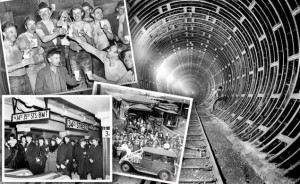 The massive, sprawling subway system, which has 656 track miles allocated for passenger service, with more than 400 miles of underground track, reaches a depth of 160 feet below the surface at its deepest point. There are points of interest to be found throughout the system, such as the abandoned, once secret, City Hall stop which features tiled arches and skylights.
The massive, sprawling subway system, which has 656 track miles allocated for passenger service, with more than 400 miles of underground track, reaches a depth of 160 feet below the surface at its deepest point. There are points of interest to be found throughout the system, such as the abandoned, once secret, City Hall stop which features tiled arches and skylights.
The subway system touches four boroughs of New York City from Manhattan to Brooklyn. In 1994, the Times Square station was the city’s busiest with 35.6 million fares purchased. The entire system is powered by the New York Power Authority, which sends electricity to the trains through 2,500 miles of cable.
For a city where everything seems more expensive, the cost to use the subway has remained fairly reasonable. In 2010, a single fare cost $2.50, and today passengers can buy a 30-day card for just $112.
The Big Dig
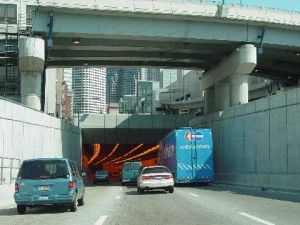 In terms of sheer chutzpah, the Massachusetts Department of Transportation’s underground expressway in Boston, labeled “The Big Dig,” did not disappoint. The transit project was needed to facilitate more efficient travel by improving surface street systems and providing an underground path for motorists.
In terms of sheer chutzpah, the Massachusetts Department of Transportation’s underground expressway in Boston, labeled “The Big Dig,” did not disappoint. The transit project was needed to facilitate more efficient travel by improving surface street systems and providing an underground path for motorists.
The amount of dirt that had to be removed – 16 million cubic yards – could fill a football stadium from ground level to nosebleed seats 16 times over and took 541,000 truckloads to carry away.
The concrete required – 3.8 million cubic yards – could pave a sidewalk from Boston to San Francisco and back three times over. And the total reinforced steel employed combined could fashion a bar long enough to wrap around the entire Earth.
Three Gorges Dam
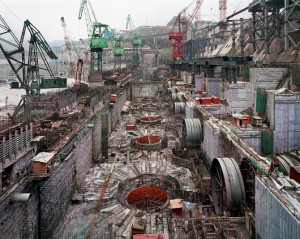 The largest water conservation project in the world, located in China, provided jobs for 250,000 people and required resources of ridiculous proportions.
The largest water conservation project in the world, located in China, provided jobs for 250,000 people and required resources of ridiculous proportions.
Constructing the Three Gorges Dam required the removal of 102.59-million cubic meters of rock and dirt, involved the mixing of 27.15-million cubic meters of cement and necessitated the construction of 281,000 tons of metal structures, 354,000 tons of reinforcement bars and 231,000 square meters of concrete walls.
The dam body was completed in 2006, and this amazing dam project was fully completed and functional as of July 4, 2012. According to InternationalRivers.org, the massive project sets records for number of people displaced (more than 1.2 million), number of cities and towns flooded (13 cities, 140 towns, 1,350 villages), and length of reservoir (more than 600 kilometers).
International Space Station
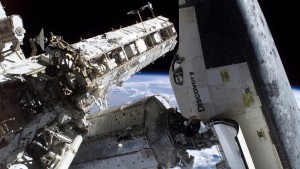 In 2000, when the International Space Station became operational and received its first visitors, the cosmic destination has become a port of call for more than 200 astronauts from around the world.
In 2000, when the International Space Station became operational and received its first visitors, the cosmic destination has become a port of call for more than 200 astronauts from around the world.
The sheer size of the station, and the sustaining resources that it employs, are rarely discussed. With a module length of 167.3 feet and a mass of 924,739 pounds, the International Space Station is enormous. It houses 13,696 cubic feet of habitable volume and 32,333 cubic feet of pressurized volume and uses eight solar arrays to generate 84 kilowatts of power. There are 2.3 million lines of computer code at the heart of its operation.



